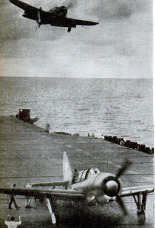-
Title (Dublin Core)
-
I ride "the beast"
-
Article Title and/or Image Caption (Dublin Core)
-
I ride "the beast"
-
extracted text (Extract Text)
-
AT THE aft end of the carrier deck
some of our Helldivers sat packed
together, hunch-shouldered against the
wind like cattle sharing the warmth of
their collective bodies. Below, stored
in the cavernous hangar deck, were
other dive bombers, ready to be
wheeled quickly on the elevators.
We knew that it wouldn't be long
now. We were entering the combat
area of the western Pacific, bound for
what was to prove to be one of the
strangest engagements of the war.
Everything belied it. Some of the
pilots and air crewmen lolled in their
quarters or in the ready room. Others
monosyllabically played poker.
“Bombing One,” as our squadron
was called, had trained hard for this
hour. We had new-type dive bomb-
ers, faster, more heavily armed than
the carrier-borne bombers that had
been thrown at the Japs in the criti-
cal battles in the Pacific earlier in
the war.
Our Curtiss SB2C Helldivers,
weighing some seven tons apiece,
were built to withstand the strains
of hard pull-outs and of bouncing
deck landings when our carrier—
which must remain unnamed—was
pitching and rolling. It is one thing
to put a plane down on an airport on
solid land, and another thing to do it
on a landing field that won't stand
still.
These planes were “the beasts.”
Where the term came from I don't
know, unless it derived from the big
fuselage (wholly enclosing the
bomb), the skyscraper fin, and the
engine with its barrel-like cowling,
which was as big as 10 wash tubs.
They had other attributes. They
carried a 20-millimeter cannon in
each wing, affording high firepower
against enemy planes and ground
installations. These were the first
cannon ever fitted to an American
dive bomber in the 16 years that the
Navy had practiced the art. They also
were the first to be mounted on a
carrier-borne plane.
In addition to the 1,000-pound
bomb carried in the belly, there were
two 250-pounders under the wings.
Protecting the pilot and rear gun-
ner were 150 pounds of armor plate.
The Helldiver had been born in a
cattle barn on the Ohio State Fair
grounds at Columbus as the Curtiss
company pushed its manufacture in
temporary quarters while a new fac-
tory was being erected. The project
director, Raymond C. Blaylock—
who, by the way, had worked on the
FSC, the original Helldiver, the first
plane to be built specifically for dive
bombing when the Navy was evolv-
ing the technique between 1927 and
1930—managed hundreds of modifi-
cations dictated by Pacific battle ex-
perience.
My squadron knew what its job
was to be. The dive bomber and the
torpedo plane constitute the Navy's
one-two air punch. Their co-ordi-
nated attack is the only type that
bas been evolved with weight enough
to break
up enemy task forces. It worked in the Bat-
tle of the Coral Sea, at Midway, Guadal-
canal, and Rabaul.
On sea targets we would dive on anything
the Japs were foolish enough to put in our
sights. The fighters would strafe the decks,
then fly cover above us. Below us the tor-
pedo planes would sweep in and administer
the coup de grace after we had our targets
dead in the water.
Against land targets we would use sub-
stantially the same tactics. Land targets
were easier. They didn't move. There we
would get in the best licks with our wing
guns.
The first objective of the task force to
which we were attached was Saipan. The
Marines were to take Guam. This was D-
day minus 3, and our job was to soften up
the defenses. We also were to help neutralize
Jap air power in the area.
We hit Guam. Orote peninsula crawled
with Jap antiaircraft emplacements. They
were hard to see from the altitude at which
we ‘pushed over"-—that is, where we went
into a shallow dive. Usually it wasn’t until
we were halfway down that we spotted the
AA “winks.” Then we would have to go on
very low into a rain of automatic-weapons
fire to put our bombs where we wanted
them.
We used the cannon to start fires.
Our force pulled away and cruised north
to hit the Bonin Islands to neutralize the
Jap bases there and prevent interference
with our investment of Guam.
‘When we came back, a strange show was
going on. Without risk to their carriers
(they thought), the Japanese were launch-
ing hundreds of planes against us. Their
idea was simple. It was good. It just didn't
work. The Jap planes were to shuttle-bomb
—plastering our invasion forces and then
flying on to Guam. There they were to re-
fuel, rearm, and plaster us again.
Meantime, their carriers were to stand off
out of range of our fleet.
The double trouble for the Japs was that
our fighters shot down their planes prac-
tically as fast as they appeared, and what
few did get through couldn't use Guam be-
cause we had dive-bombed the airfield until
its surface looked like a Swiss cheese.
Somewhere, there west of us, was a Jap
fleet. We waited. Finally the orders came.
‘We didn’t know it then, but we were going
to participate in the First Battle of the East-
ern Philippines. It would be a long strike,
300 miles or so. The Helldivers had much
more range than earlier dive bombers. They
had more than 1,700 horsepower on their
noses, whirling three-bladed steel propellers.
But, even so, we ran the chance of losing
all the planes we launched. The point, of
course, was that the richness of the target
was worth the risk.
Bombing One pilots and gunners climbed
into their planes. Despite the size and
weight of the Helldivers, take-offs were
simplified by aerodynamic refinements. Out-
board on the leading edges of the wing were
“slots,” which go into operation when the
leading gear is lowered, assuring lateral con-
trol at low speeds. When the needle on the
air-speed indicator was at a dangerously
low point, a part of the leading edge of the
wing would pop out to channel an auxiliary
flow of clean air over the ailerons.
One by one we rolled down the length of
the deck, rendezvoused, and settled into for-
mation. Off to the right the planes of other
flat-tops were heading west.
It was a long flight. Presently two of my
planes got croupy engines and turned back.
That left 13.
Except for the blobs of cumulus clouds, it
was a perfect late afternoon. Here and there
the clouds obscured the sea.
Even before we flushed the Japs we knew
they had been found. The first elements of
our striking force relayed the news in code.
They were killing time, awaiting our arrival.
Then, of a sudden, our target was ahead
of us in plain sight. It was huge. It stretched
to the horizon, all around. There were flat-
tops, battleships, cruisers, destroyers, and
the inevitable “train” of supply ships. It
all looked peaceful enough as the afternoon
sun slanted on the water. Two of the ves-
sels, toy ships on a pond, were refueling.
Astern, flanked by two or three cruisers and
some destroyers, was a big Shokaku-class
flat-top of 30,000 tons. Its deck was bare.
For a dive-bombing pilot, this was smor-
gasbord.
“We're going after the big one astern,” I
radioed the leader of our torpedo-bomber
squadron. I glanced around. All of my boys
seemed O. K.
We nosed over at 15,000 and were doing
260 knots in our high-speed approach. We
opened the bomb-bay doors and pushed over
—steepening the dive—at 9,000 and opened
the diving flaps. The flaps, or air brakes,
are inboard on the trailing edge of the
wing. In position for a dive, they angle up-
ward and downward to form an elongated V.
The big bomb is carried internally, for the
first time in the Helldiver design, to stream-
line the plane and provide more speed. The
ship is fast enough to keep up with its es-
corting fighters, the Hellcat and the Corsair.
Antiaircraft guns began winking at us.
The flak floated past, reddish-brown, white,
and silver. AA fire comes straight at you,
and you wonder why it doesn’t hit you.
The carrier began turning. It turned
amazingly fast. That worried me. My plane
as yet was not in bombing attitude. I
wouldn't go into a 70-degree dive until I was
down to some 5,000 feet. I was leading the
carrier with my sight in an effort to lay the
bomb in the middle of its deck. I kept riding
the rudder pedals.
Dive bombing is a matter of estimation—
estimation of the wind, the speed and course
of the target, and the amount of time it will
take your bomb to drop from a given alti-
tude. You watch your altimeter, compen-
sating in your head for the “lag” it shows
behind your actual altitude.
There is little sensation to a dive. You
know you are picking up speed. The pres-
sure on your eardrums tells you so. Your
senses are alive to everything, even the
littlest item. The target keeps getting big-
ger. The whitecaps, which from upstairs
looked like white fluff on glass, begin taking
on motion.
The flat-top was trying to complete a cir-
cle. I steepened my dive. In a moment the
altimeter said “go.” I pressed the button,
automatically reaching for the manual re-
lease to make sure the bomb was gone.
With the next motion I closed the diving
flaps and bomb-bay doors and pulled out.
Pull-outs are a lot worse in fiction than
they are in fact. Your legs feel heavy for
a moment. Your sight sometimes dims, as
though someone had clipped you on the chin
with a boxing glove. Then it’s all over.
1 raced away, riding the rudder, hauling
and pushing on the stick to make my plane
a poor target. Things happen in slow mo-
tion in battle. I flew for what I thought was
a long time. Then I turned to count my
planes. Instantly tracers began outlining
the Helldiver in red. I resumed course, tak-
ing violent evasive action. Pretty soon there
were no more tracers.
I called up my squadron on the radio.
Fuel was low. It would take time to ren-
dezvous, so planes would have to return in
independent groups. Five of my planes
joined up with me. I wished we could wait
for the rest. We headed east.
It hadn't been a bad strike. Three mem-
bers of Bombing One had hit clean. My
bomb had been a near hit. The flat-top was
burning so well that the last two pilots to
push over decided not to waste their bombs.
on it. They attacked a cruiser.
Fire is the bane of the flat-top. If you can
penetrate the deck plates, the chances are
you will ignite the oil and high-octane gaso-
line stored below. Normally that stops it
dead in the water. A flat-top’s watertight
compartments make it hard for dive bomb-
ers to sink it, but the torpedo planes do a
nice job of finishing it off.
It looked as though the torpedo planes had
registered three hits on our target. Other
ships in the Jap fleet had taken a pounding,
among them a Kongo-class battleship. A
Hayataka-class carrier was sunk. Another
in the same class was damaged. A cruiser
and three destroyers were hit. Three tank-
ers were sunk, two others left burning.
Our planes flew eastward, throttled back
to conserve gas. The sun went down. Dusk
came, then night. The fuel needles crept
across the faces of the dials. It looked bad.
I kept rehearsing the sequence. of what to
do in a water landing.
My fuel needle wavered uncertainly at
the far corner of the dial. Now it was almost
on the little peg at the corner. This was it.
I waited for the engine to gasp and conk
out. And right then, as though in answer to
a prayer, we looked down on the home
hearth,
A lot of planes went into the water that
night. Some “splashed,” as Navy parlance
has it, short of the fleet on their way home.
Some milled around above the fleet, trying
in the melee to find their home decks, and
failing. Some landed on other carriers. |
The destroyers were everywhere, wet from
stem to fantail as always, pulling dripping
pilots and gunners aboard.
I happened to make our carrier—with five
minutes’ fuel left in my tanks. A cursory
roll call brought little response. I kept say-
ing to myself, “Well, it was a damn good |
squadron while it lasted.” I could think only
in the past tense. My pilots, my gunners,
my planes, were gone.
And then, one by one, destroyers began
drawing alongside and the men of Bombing
One began clambering aboard our flat-top.
Pretty soon I had half my flight, then three
fourths of it, and at the end of three days
every man Jack had returned. Our casual-
ties: one cut finger.
If all the awards I recommended come
through, the men of Bombing One are going
to have a lot of decorations on their blouses.
They deserve them. |
-
Contributor (Dublin Core)
-
Comdr. Joseph W. Runyan (article writer)
-
Eric Sloane (Illustrator)
-
Language (Dublin Core)
-
eng
-
Date Issued (Dublin Core)
-
1945-02
-
pages (Bibliographic Ontology)
-
131-135,205-206
-
Rights (Dublin Core)
-
Public domain
-
Archived by (Dublin Core)
-
Sami Akbiyik
-
Marco Bortolami (editor)
 Popular Science Monthly, v. 146. n. 2. 1945
Popular Science Monthly, v. 146. n. 2. 1945
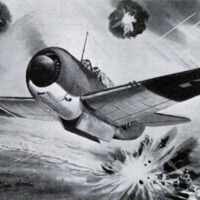 Ekran Resmi 2022-10-05 19.37.33.png
Ekran Resmi 2022-10-05 19.37.33.png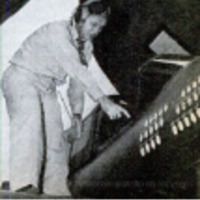 Ekran Resmi 2022-10-05 19.37.39.png
Ekran Resmi 2022-10-05 19.37.39.png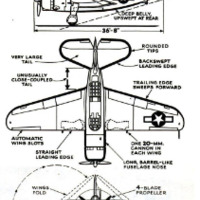 Ekran Resmi 2022-10-05 19.37.44.png
Ekran Resmi 2022-10-05 19.37.44.png Ekran Resmi 2022-10-05 19.37.49.png
Ekran Resmi 2022-10-05 19.37.49.png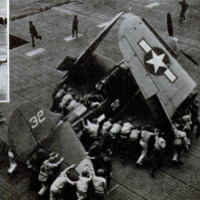 Ekran Resmi 2022-10-05 19.37.54.png
Ekran Resmi 2022-10-05 19.37.54.png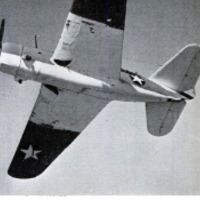 Ekran Resmi 2022-10-05 19.38.00.png
Ekran Resmi 2022-10-05 19.38.00.png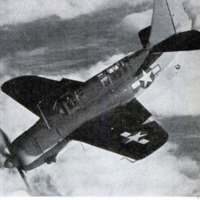 Ekran Resmi 2022-10-05 19.38.08.png
Ekran Resmi 2022-10-05 19.38.08.png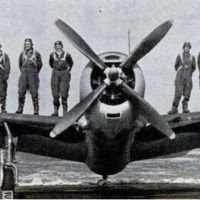 Ekran Resmi 2022-10-05 19.38.13.png
Ekran Resmi 2022-10-05 19.38.13.png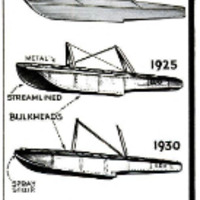 Ekran Resmi 2022-10-05 19.38.28.png
Ekran Resmi 2022-10-05 19.38.28.png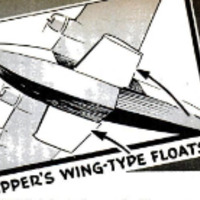 Ekran Resmi 2022-10-05 19.38.34.png
Ekran Resmi 2022-10-05 19.38.34.png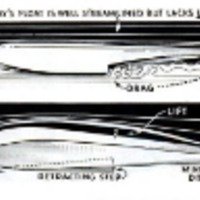 Ekran Resmi 2022-10-05 19.38.40.png
Ekran Resmi 2022-10-05 19.38.40.png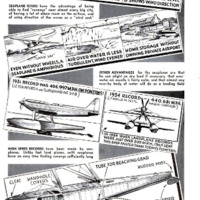 Ekran Resmi 2022-10-05 19.38.46.png
Ekran Resmi 2022-10-05 19.38.46.png



